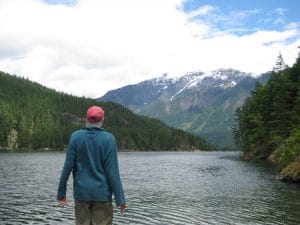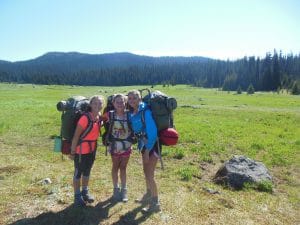It’s Monday morning during rush hour traffic. Cars are whizzing by, morning news shows are blaring, and the daily grind is apparent everywhere. For some, this can be a source of adrenaline, but for many there exists a strong desire for an escape into a space encompassed by tranquility and calmness. The idea of going outside to find peace from the everyday stresses of life is certainly not a new one. Literature from the romantic period, such as William Wordsworth’s poem about clouds, to the more modern books like “Last Child in the Woods” by Richard Louv and the forever comical “A Walk in the Woods” by Bill Bryson, talk about the benefits of being in nature. Until recently, though, there have not been many studies on the physiological reasons behind why going into nature causes one to relax and destress. We all feel the relief that washes over when winding down a trail with the distant sound of cars and people slowly fading, but does something in our body actually change from being outside?

In 1982, the Japanese government under the Ministry of Agriculture, Forestry, and Fisheries created the concept of shinrin-yoku, which roughly translates to “forest bathing.” It basically means taking in with all of your senses when in nature. With 64 percent of Japan covered in forest, but a majority of the population living in crowded urban areas, around 92 percent, the government wanted to promote health by inspiring people to get out in nature. They were interested in finding scientific data behind the effects of walking in a forest.
A study by the Center for Environment, Health, and Field Services at Chiba University was conducted on 500 adults, looking at the difference between walking in an outdoor setting versus a non-outdoor setting—on a crowded street, for example. The Japanese researchers found that “20 minutes,” in nature, “(compared with 20 minutes in an urban setting) altered cerebral blood flow in a manner that indicated a state of relaxation.” Participants’ hemoglobin levels, which are normally high when the body experiences heightened stress, decreased when in the forest. The study also found a link between phytoncide, chemicals secreted by evergreen trees, and improved immune functions. A similar study published by the National Institutes of Health showed subjects with a decrease in pulse rate and blood pressure. No physiological negatives from going outside occurred in the study.

Many outdoor enthusiasts are already well aware of the amazing perks from being a nature-seeker. (Maybe that’s why Adventure Treks instructors are always smiling in their photos!) Basically, these studies emphasize that seeking better personal health requires more than just looking out the window at the view, but physically going out and experiencing what happens when surrounded by nature. While a trip to Japan’s forests sounds exhilarating, the United States has tons of outdoor places to offer as well.
There are 155 forests that the National Forest Service manages which collectively make up roughly 249.1 million acres out of a total of 2.3 billion acres in the United States. Forest area in the U.S. accounts for roughly 33 percent of the total land area. Aside from the number of national forests, there are hundreds of national parks, state parks, and other outdoor areas to explore, many of which are not as far from your hometown as you might think. The links below show by state the amazing areas that await your exploration. Adventure Treks’ trips go to many of these outdoor areas as well! Whether the science behind a forest is interesting or not, it’s time we lift our heads up toward the sun and head out for our own dose of shinrin-yoku.
List of National Forests by State
http://www.fs.fed.us/recreation/map/state_list.shtml
List of National Parks by State
http://parks.mapquest.com/national-parks/national-parks-by-state/
List of State Parks, State Forests, and State Wildlife areas
http://www.stateparks.com/usa.html
Sources
http://www.ncbi.nlm.nih.gov/pmc/articles/PMC2793346/
http://www.motherearthnews.com/natural-health/forest-bathing-ze0z1301zgar.aspx?PageId=1
http://data.worldbank.org/indicator/AG.LND.FRST.ZS
http://www.epa.gov/agriculture/forestry.html
http://www.ers.usda.gov/media/249896/eib14_reportsummary_1_.pdf